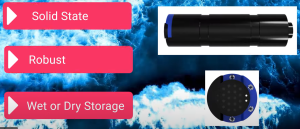 Understanding leachate and its environmental impact
Understanding leachate and its environmental impact
Leachate refers to the liquid that forms when water interacts with waste materials in landfills. It is a complex mixture containing a wide range of pollutants, including dissolved organic compounds, heavy metals, and harmful microorganisms. If not adequately managed, leachate can infiltrate soil and groundwater, posing significant environmental and public health risks.
The significance of water quality monitoring in leachate:
Monitoring the water quality of leachate is essential to assess environmental impacts and to ensure compliance with regulatory standards. By analysing various parameters, including pH, temperature, and electrical conductivity (EC), we gain insights into the chemical composition and potential toxicity of leachate. This information is vital for implementing appropriate treatment measures and preventing contamination of surrounding ecosystem and the natural environment.
The importance of pH monitoring:
pH monitoring plays a crucial role in leachate management. pH is a measure of acidity or basicity, and it influences the solubility and mobility of contaminants in leachate. Extreme pH levels can indicate the presence of corrosive substances or microbial activity, which can accelerate the release of pollutants into the environment. Therefore, continuous pH monitoring allows for early detection of potential issues and timely intervention to mitigate adverse effects.
Calibration-free pH sensor offers new cost-saving solution:
ANB Sensors has developed the ANB pH Sensor, offering a disruptive solution for leachate monitoring. The key feature of this technology is its calibration-free operation, significantly reducing maintenance requirements and operational costs. ANB achieves calibration-free operation through real-time tracking and compensation of reference signals, ensuring accurate and reliable pH measurements in situ.
The sensor offers several other notable features, including the simultaneous measurement of pH, temperature, and conductivity. It can be stored wet or dry, eliminating concerns associated with the storage of traditional glass electrodes. The sensor’s unique properties also prevent biofouling on the transducer, ensuring consistent and reliable performance. With onboard storage capacity for 15 million readings, the ANB pH Sensor enables extensive data collection and analysis. It can also be networked for use in the Internet of Things and with operating costs of approximately 70 per cent less than existing sensors, ANB’s solution really is game-changing.
Conclusion:
The ANB Calibration-Free pH Sensor represents a significant advancement in leachate monitoring technology. Its calibration-free operation, combined with its robustness, extended deployment capability, and reduced maintenance costs, make it an invaluable tool for environmental professionals. HydroTerra, with its expertise in environmental monitoring and equipment, is proud to offer this innovative solution to enhance leachate management practices.
Please contact us for further information on the ANB pH Sensor and to discuss its application to your specific monitoring needs or visit our website to check it out.
For any enquiries, please reach out to Nick Bailey.
For a brief explanation on how these Sensors work, check out this 1-minute video.
On Friday 23 June, we welcomed Mark Pritchard, Chief Commercial Officer at ANB Sensors, for the 10th instalment of our 2023 webinar series. In the presentation, called “A revolution in water quality pH sensing, Mark outlined ANB’s calibration-free sensors and how they are revolutionizing the way we monitor water. To catch up on this deep dive into the technology you can watch the webinar again here.
Full pH Webinar






